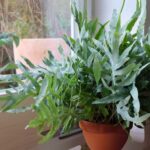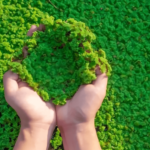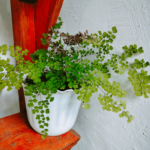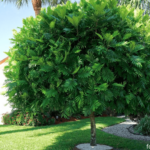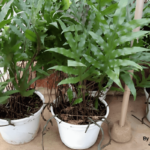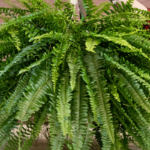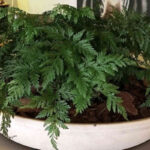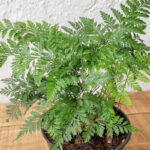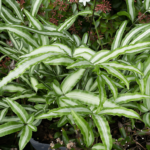The Marisa Fern, also known as the mini fern, has been gaining significant attention among cultivators.
Thanks to the “urban jungle” decoration style that has been widely adopted in recent years, these plants have returned to being used inside many homes.
Some of the advantages of having this fern in your home are:
- High air purification capacity
- Safe for dogs and cats
- Takes up little space (ranges from 30 to 60 cm)
In this article, you will learn more about this plant and how to cultivate it correctly.
How to Care for the Marisa Fern
This is an easy-to-care-for fern, ideal for beginners.
Furthermore, it is a very famous plant that can be easily found in gardening stores in various countries. Therefore, once you master cultivation, it becomes easy and affordable to build a collection of this plant.
Keep reading to learn the necessary care to keep your Marisa Fern healthy year-round.
1 – Where to Cultivate

Unlike other ferns that take up a lot of space, this species is compact and can easily be cultivated in small spaces inside your home or apartment.
Indoor cultivation should be done in places where it has:
- Good humidity
- Indirect lighting
- Protection against strong winds
Bathrooms, living rooms, kitchens, bedrooms, and even offices are ideal locations for this plant, as long as they provide the mentioned care.
Outdoor cultivation requires the same care.
Some common options for placing this plant outdoors include:
- Balconies
- Shaded gardens
- Under trees
Regarding the pot, plastic pots are the most recommended because they are lightweight and retain moisture.
After selecting a location for your fern, avoid moving it frequently, as this can stress it and hinder its development.
2 – Humidity and Watering
Also known as Nephrolepis exaltata “Marisa,” this fern requires high humidity to thrive.
Avoid placing it in dry areas or in enclosed spaces with air conditioning.
If the humidity is low, you can:
- Use humidifiers: ideal for indoor cultivation.
- Place a dish with stones and water under the fern’s pot. Remember that the pot should rest on the stones and not sink into the water, as this can rot the roots.
- Lightly spray water on the leaves. Do this in the early morning, before the sun gets hot, so that the leaves can dry before the end of the day.
As for watering, always keep the soil of your fern moist, but never soggy.
The frequency of watering varies depending on the climate and the stage of your plant.
Therefore, to check if it needs watering, insert your finger 2.5 cm (1 inch) deep into the soil and see if it has dried. Water it just before the soil dries out.
3 – Ventilation and Temperature
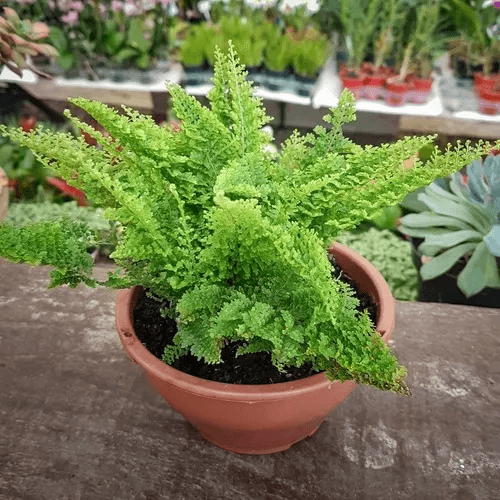
As mentioned earlier, you should avoid exposing your Marisa Fern to excessive wind, as too much wind reduces its humidity.
In terms of temperature, this is a tropical plant, so it is ideal to cultivate it in temperatures between 16°C to 25°C (61°F to 77°F).
In very cold climates with frost, it’s important to protect your fern, especially if it is being cultivated outdoors. On very hot days, be sure to keep your fern away from direct sunlight and keep the soil moist.
4 – Lighting
This is one of the simplest care requirements.
Place your mini fern in a location where it receives indirect light; it does not like direct sunlight.
Excessive lighting can burn its leaves.
5 – Fertilization
Fertilization should only occur during the growth period of this plant, which takes place in spring and summer. As for frequency, follow the instructions on your fertilizer’s label.
There are two types of fertilizers you can use for your fern.
The first option is organic fertilizers made from organic materials. Some of the most commonly used organic fertilizers for this fern include:
- Worm castings
- Crushed eggshells
- Bone meal
- Castor cake
The major drawback of this type of fertilization is that nutrients are absorbed through the decomposition of these materials, meaning if you cultivate your fern indoors, be aware that these fertilizers usually emit an unpleasant odor.
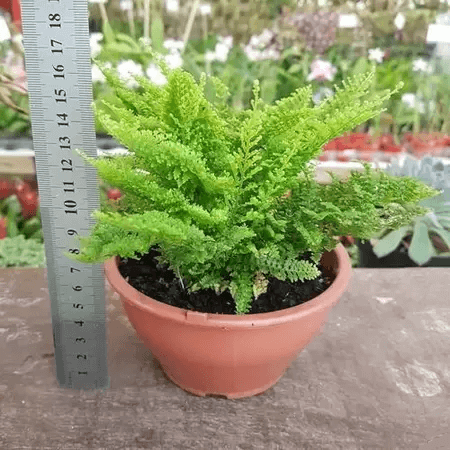
Another option is inorganic fertilizers, also known as chemical fertilizers. These fertilizers are usually readily available in gardening stores and are most commonly of the NPK type.
If you opt for this type of fertilizer, look for those made specifically for ferns.
The problem with chemical fertilizers is the risk of over-fertilization.
In this case, you will notice that your fern’s leaves are burned, and you may find accumulated salts in the soil. When you notice these signs, reduce the frequency of your fertilizer and continue watering your plant; naturally, the salts will dissipate.
6 – Repotting
Unlike other ferns, the mini fern does not require frequent repotting due to its growth.
Since its size ranges from 30 to 60 cm, you can typically leave it in the pot for several years, only needing to repot it in case of disease, old substrate, or for plant division.
In the video below, you will learn how to repot your fern.
The ideal soil for this species should be rich in organic material and have good drainage.
Some substrate options you can use include:
- Topsoil
- Worm castings
- Coconut coir
- Coarse sand
- Garden soil
7 – Pruning
As for pruning, simply use sterilized scissors to trim the branches and leaves that are dry or diseased.
An interesting fact is that the simplest way to propagate the Marisa Fern is through clump division, where during the repotting process, you divide the plant into two or more plants.
Characteristics and Curiosities
The Marisa fern is often confused with the Boston fern because both belong to the same species, Nephrolepis Exaltata.
The difference between them lies in their variety; while the Boston fern belongs to the Bostoniensis variety, the Marisa fern is of the Marisa variety.
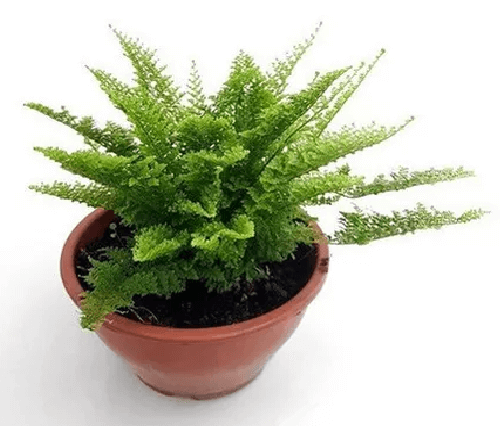
The genus Nephrolepis comprises about 30 species, some of which are so common that they are considered weeds. The various varieties of the Nephrolepis Exaltata species are very hardy plants cultivated in various regions of the world.
The mini fern is a compact plant with very striking dark green leaves.
Conclusion
The mini fern is an excellent choice for cultivation for those with limited space and who don’t want to put in too much effort to keep it healthy.
And if you want to learn more about cultivating other species of ferns, check out the texts below:
- Leatherleaf fern – Care, Characteristics and Curiosities
- Monarch Fern – How to Care and Propagate
- Rabbit’s Foot Fern (Davallia fejeensis): Cultivation Guide
Did you like this text? Then share it on your social networks and leave a comment below.


